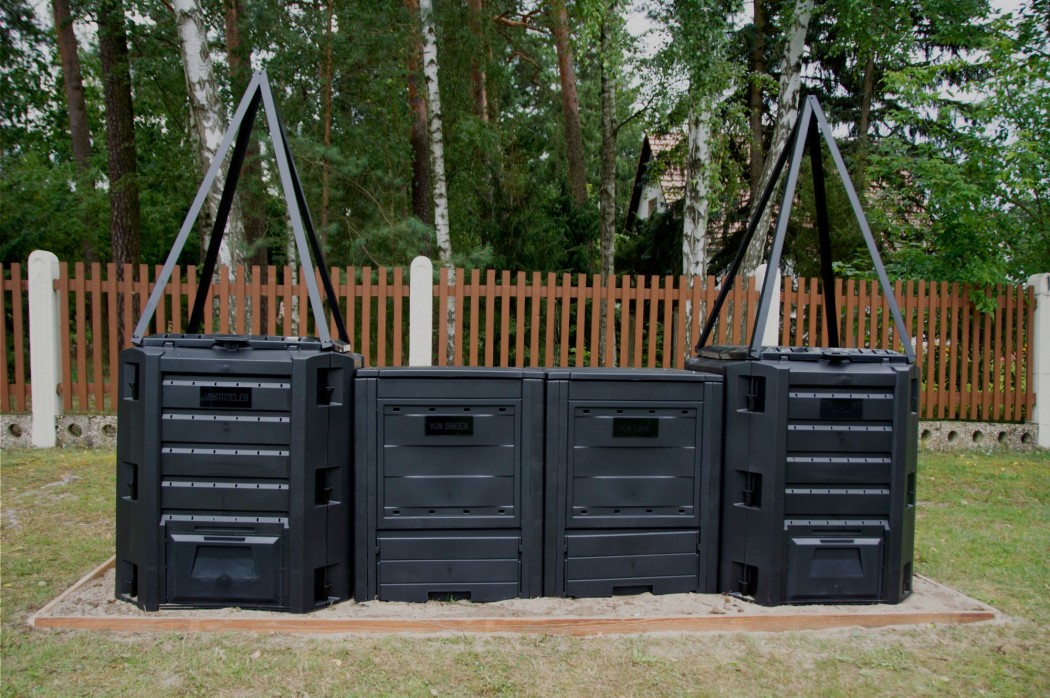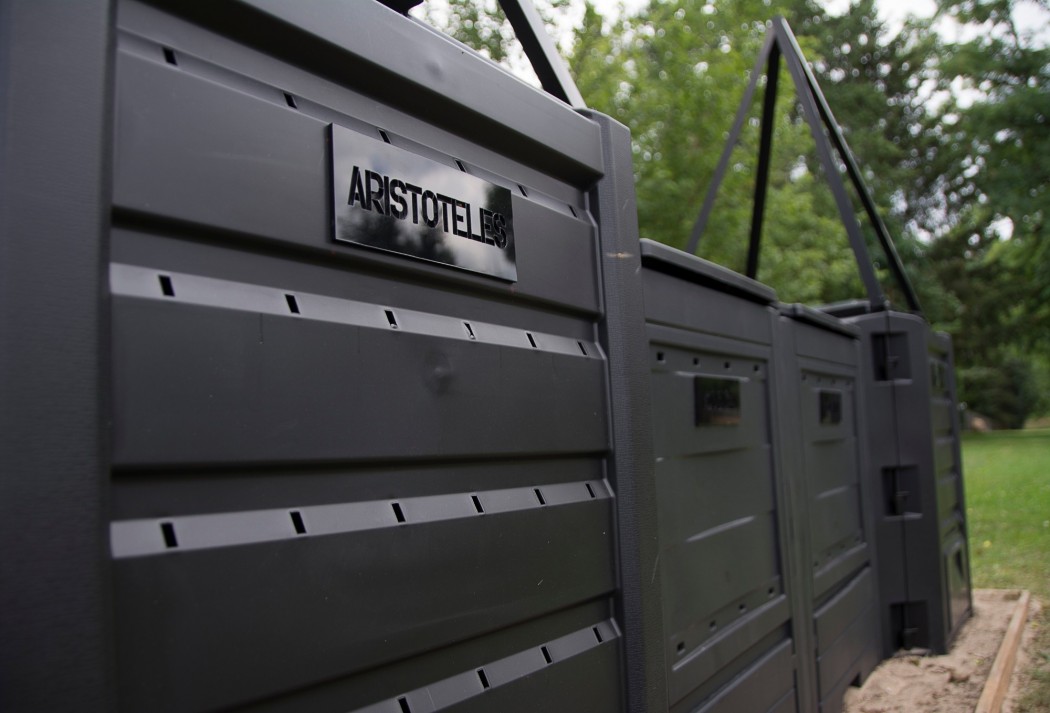SCULPTURE, PARTICIPATIVE SITE-SPECIFIC INSTALLATION
The spirit compost involves the public alongside the local residents of Jamlitz in Germany. Residents were invited to participate by providing their green kitchen waste (for example: eggshells, coffee grounds, potato peels, etc) in a four-part stationary compost plant. Upon their individual choice, each participant uses one of the separated waste compartments which pool four options that culminate in the creation of special compost varieties. In each case, green waste is mixed with a base of compost worms alongside carefully chosen, duplicated, and shredded paper texts on: Aristoteles, Hildegard von Bingen, Carl von Linné and Charles Darwin.
Resting one scholar per compartment, it is a collection of texts at the cornerstone of modernist understandings of nature. Furthermore, in a gentle process of rotting and maturation, the selected texts and the green waste turn into compost varieties with separate, yet, unique characteristics. The core basis for this is a suggestive transmission on scholarly consciousness into the organic substance with its micro-organisms and worms. This concludes in a resulting ‘potentised’ compost that was ‘given back’ and freely returned to the participants in spring 2022. The different qualities of the compost purposefully enhance participant gardens and their owners in support of both, the spiritual, as well as plant life itself:
- Aristoteles compost helps to clarify fundamental conception disagreements
- Hildegard von Bingen compost strengthened the human-plant relations
- Carl von Linné compost supports a sense of community and structure formation
- Charles Darwin compost promotes individual assertiveness
The work is the spirit compost – an ode and criticism at the same time. It carries the hope that ‘what has been eaten’ will turn into a new substance, a base for the awareness of the future. And it is a homeopathic dose of fresh soil on the ‘guilty’ grounds of Jamlitz.
The spirit compost was installed as a temporary work and commission for the scope of Standort_Bestimmung in Jamlitz*, Germany, 2021. This manifestation was organized by brandung e.V. (An organization which promotes art and culture in the area between Dahme, Neiße and Spree) https://www.brandung-ev.de
*Jamlitz is close to the Polish border and has an extraordinarily complex, and partly very dark history. In WWII a forced labor camp, a subcamp of the concentration camp Sachsenhausen was located in Jamlitz. At the end of the war in February 1945 the camp was the starting point of a death march (Todesmarsch in German), a forced transfer of prisoners walking in the direction of Oranienburg (concentration camp Sachsenhausen). More than 1340 prisoners, mainly Hungarian Jews that have been too sick or weak to walk, were executed in Jamlitz. Around half of the bodies were never found and are presumably buried in or around the village.
Photography: Anna Grunemann, Yvonne Scheffler and Helmut Dick


